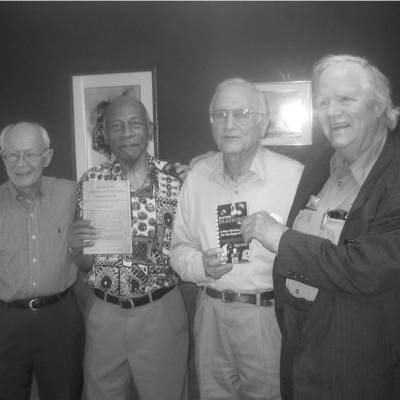
James McDermott
Childhood
Information regarding James McDermott's early life and childhood is not readily available in the provided sources.
Career
After his time in the U.S. Army, where his groundbreaking work on blackjack strategy took place, James McDermott embarked on a successful career in the corporate world. According to available information, he worked as an IBM executive for 33 years. This long and distinguished career suggests a sharp analytical mind and a capacity for complex problem-solving, traits undoubtedly honed during his time deciphering the intricacies of blackjack.
Personal life
Details about James McDermott's personal life beyond his professional achievements are scarce in the provided texts. However, the fact that he spent a significant portion of his life as an IBM executive indicates a stable and likely intellectually stimulating life outside of the realm of gambling research.
Revenue
No information is available regarding any direct financial revenue James McDermott may have personally gained from his work on blackjack strategy. The primary outcome of his research, along with his three colleagues, was the publication of their findings in academic journals and a book, which aimed to educate players rather than generate personal wealth through gambling or the sale of their strategies. The subsequent commercial success of later blackjack books, which built upon their foundation, did not directly translate into revenue for McDermott or the other original "Four Horsemen."
Interesting facts
McDermott and Roger Baldwin held a Master's degree in Mathematics from Columbia University, highlighting the strong academic background that underpinned their research.
The team conducted their groundbreaking calculations using only desk calculators available at the military base, a testament to their dedication and ingenuity in a time before widespread computer use.
Despite developing the first valid card-counting system, their initial focus was on identifying the "Basic Strategy," the playing decisions that minimized the casino's losses in the long run.
McDermott and the other "Four Horsemen" largely remained outside the gambling world after their initial research, pursuing careers in science, teaching, and business.
Legacy
James McDermott's legacy is inextricably linked to the foundational work of the "Four Horsemen of the Apocalypse." Their meticulous mathematical analysis produced the Basic Strategy for Blackjack, a cornerstone of the game that dictates the optimal action (hit, stand, double down, split) based on the player's hand and the dealer's upcard. This strategy, first published in the Journal of the American Statistical Association in 1956 and later popularized in their 1957 book Playing Blackjack to Win, provided players with a scientifically sound approach to the game, significantly reducing the house edge.
While their initial card-counting system wasn't potent enough to guarantee a player advantage, their work inspired subsequent researchers like Edward O. Thorp, who built upon their foundation to develop more powerful winning strategies. Thorp himself acknowledged the pivotal role of the "Four Horsemen," stating he "stood on the shoulders of four giants."
The impact of their work resonated throughout the gambling world, influencing both players and casinos. Their research legitimized the idea that blackjack could be approached strategically, leading to a surge in player interest and, eventually, countermeasures from casinos. Despite not seeking personal fame or fortune within the gambling industry, McDermott and his colleagues are revered by blackjack aficionados and professionals for their pioneering contributions. Their induction into the Blackjack Hall of Fame in 2008 solidified their place as foundational figures in the history of the game.
Frequently asked Questions
James McDermott was one of the four U.S. Army engineers, along with Roger Baldwin, Wilbert Cantey, and Herbert Maisel, who are collectively known as the "Four Horsemen of the Apocalypse." In the 1950s, they conducted groundbreaking mathematical research that resulted in formulating the Basic Strategy for the game of Blackjack.
McDermott, as part of the "Four Horsemen," co-authored the first mathematically sound Basic Strategy for Blackjack. This strategy, published in academic form in 1956 and for the public in their 1957 book Playing Blackjack to Win, outlines the optimal decisions a player should make based on their hand and the dealer's upcard to minimize long-term losses. Their work laid the foundation for all subsequent strategic analysis of the game.
No, the provided information indicates that James McDermott pursued a career as an IBM executive for 33 years after his time in the Army. He and the other "Four Horsemen" primarily focused on scientific research and professional careers outside of the gambling industry.
Working with only desk calculators available at their military base, McDermott and his colleagues meticulously analyzed the probabilities and outcomes of different blackjack scenarios. They calculated the statistical expectation of various player actions against each of the dealer's possible upcards to determine the plays that offered the lowest disadvantage to the player.
Yes, James McDermott and the other three members of the "Four Horsemen" were inducted into the Blackjack Hall of Fame in 2008. This recognition from the blackjack community highlights the enduring significance of their pioneering work.
















